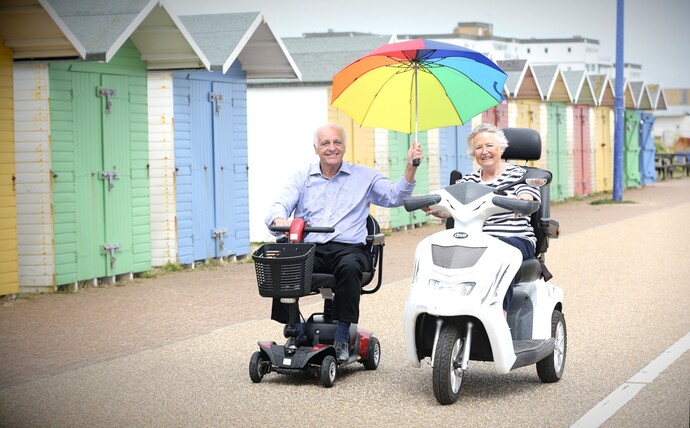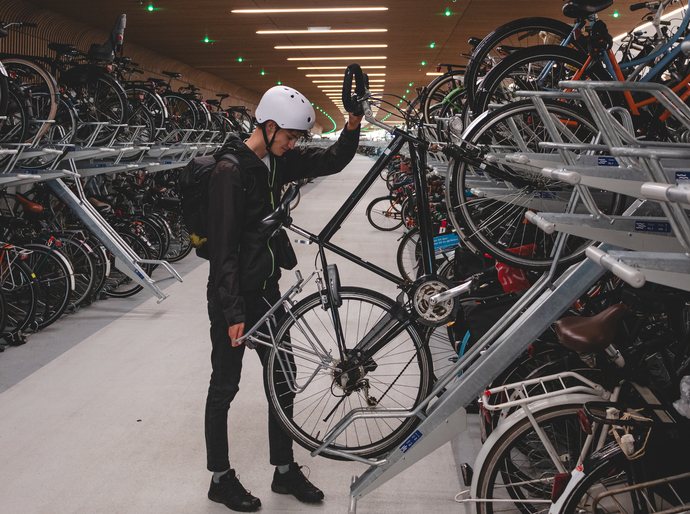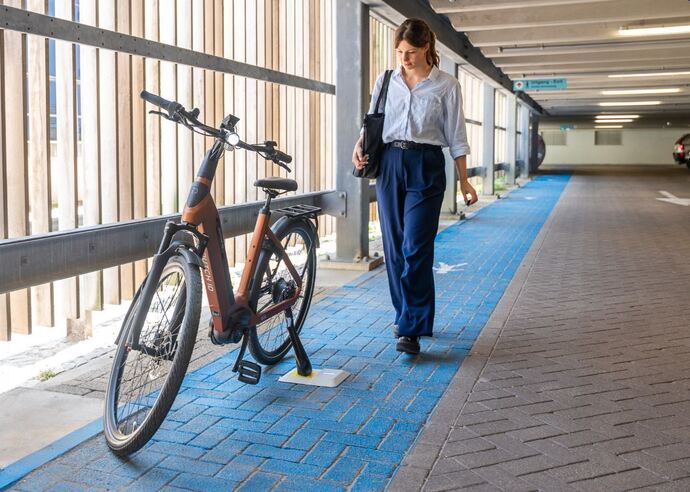Behold our pedal-powered popemobile
March 28, 2023

We're the first to admit that releasing an April Fool prank a few days before the day itself is a little underhand, but how else would we have convinced media around the world to run the story?
1. Pedal-powered Popemobile
Having established a reputation as a Pope who liked to take the bus, we offered Pope Francis the opportunity to cement his image as the people's pontiff with our design for the world's first pedal-powered popemobile.
2. Pedestrian speed limit on wet pavements

In 2015 we announced that pavements across Britain were to be painted with speed limit signs visible only when it rains.
"Amid concern that pedestrians are not taking enough care in wet conditions, it is thought officials at the department for transport took inspiration from the French, who impose lower speed limits on motorways when it rains."
"According to health and safety experts, walkers of all ages have been clocked at speeds as high as 4 mph when the heavens open. With the first wet-weather pavements due to be unveiled in London on 1st April, a spokesperson earlier today explained: 'April showers pose a serious skid risk for speeding walkers who put their foot to the floor'."
3. What every cyclist needs - eyes in the back of our head
Poor driving standards mean every cyclist could do with eyes in the back of their head. It's the reason we dreamt up iONu - an inflatable mask riders wear on the back of their heads to give overtaking drivers the impression they're being watched.
We were inspired to build the iONu after asking 800 cyclists to name their least favourite aspect of life on two wheels. 52 per cent of respondents cited ‘cars and lorries passing too close’ as their number one complaint.
It's obviously a bit of fun, but the idea draws on interesting psychology. When Newcastle University placed posters of eyes on campus grounds, they reduced cycle theft by 62 per cent. Furthermore, bike theft in those areas without the posters rose by a similar amount, suggesting the crime had been displaced to other locations rather than eliminated.
In a previous study in 2006, the same scientists looked at the impact of images of eyes on contributions to an honesty box in a tea room. They found people put nearly three times more money in the box when there were eyes compared with flowers.
4. The safety benefits Helmet Hair
Our unisex Helmet Hair contraption was a design of cycle helmet incorporating a long, flowing blonde wig and scientifically proven to keep drivers from overtaking too close. The idea was inspired by cycle helmet research carried out by Bath University. The study revealed that car drivers leave less room when overtaking a cyclist wearing a helmet, but a much wider berth when passing a rider with long hair.

As part of his research, Dr Ian Walker donned a long wig to see whether there was any difference in passing distance when drivers thought they were overtaking what appeared to be a female cyclist. While wearing the wig, drivers gave him an average of 14 centimetres more space when passing.
The Helmet Hair design draws on these findings to provide cyclists who choose, or are forced by legislation, to wear head protection the best of both worlds; the perceived benefit of wearing a helmet without the disadvantage of being overtaken too close by drivers.
The ethical choice
The ETA was established in 1990 as an ethical provider of green, reliable travel services. Over 30 years on, we continue to offer cycle insurance , breakdown cover and mobility scooter insurance while putting concern for the environment at the heart of all we do.
The Good Shopping Guide judges us to be the UK's most ethical provider.


Information correct at time of publication.







